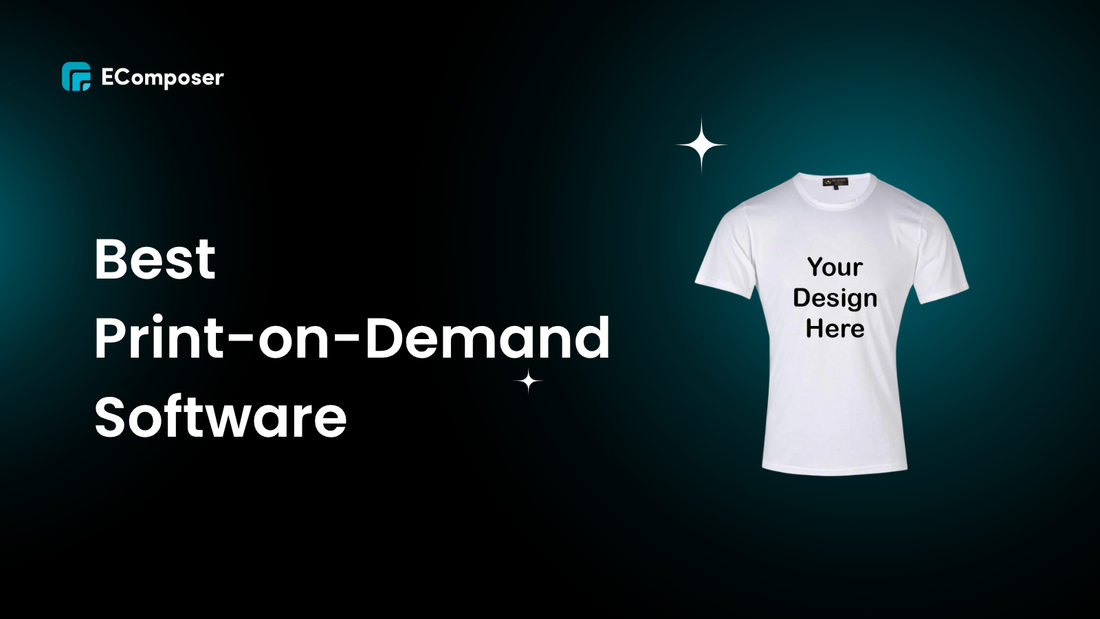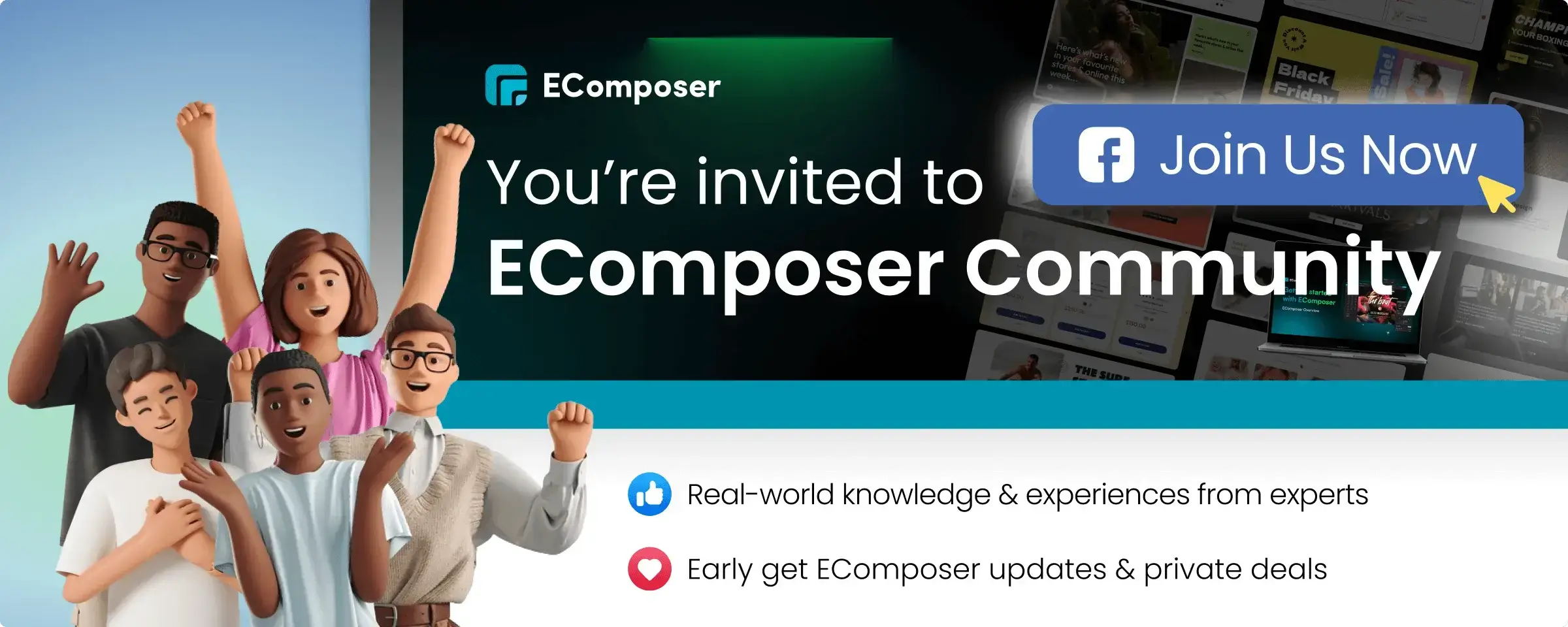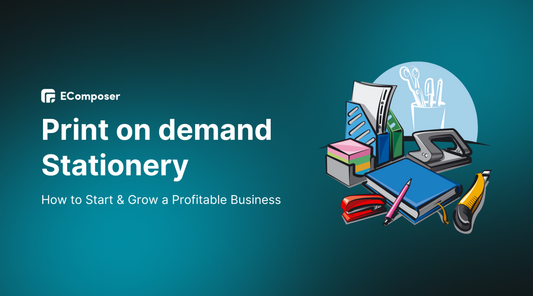Top 12 Best Print-on-Demand Software for Entrepreneurs in 2025

Table Of Contents
H2: Introduction
Print-on-demand (POD) technology has become a major e-commerce tool by 2025. The global market is expected to grow from $8.16 billion in 2025 and $19.8 billion by 2029. Entrepreneurs are avoiding expensive unsold inventory and warehouse leases by making and selling custom goods without having to deal with physical goods. This is what has led to this growth. But not all POD software is the same; some platforms have better integrations and automation, while others are better for beginners.
This guide is meant to explain what POD software is, how it affects entrepreneurship, and compare the top 12 platforms in 2025. It will help both new and experienced sellers.
H2: What Is Print on Demand Software? (And Why Entrepreneurs Need It)
Print-on-demand software is the digital engine behind today’s inventory-free businesses. Think of it as the invisible infrastructure that connects your online storefront to a global network of printers, suppliers, and fulfillment centers. You design the product, upload it to your store, and once a customer places an order, the software automatically sends it to a production partner who prints, packs, and ships it under your brand.
For entrepreneurs, this means:
-
No upfront inventory risk. You don’t need to stock hundreds of t-shirts hoping they’ll sell; products are only made after a purchase.
-
Scalability on autopilot. Using print-on-demand automation tools like Zapier or Shopify Flow, you can run a global brand while spending less time on repetitive tasks.
-
Creative freedom. Artists and designers can instantly bring ideas to market without worrying about supply chain headaches.
-
Multi-channel selling. The right multi-channel POD software platform integrates with Shopify, Etsy, Amazon Merch, TikTok Shops, and more, meeting customers wherever they are.
-
Global reach. With localized printing hubs from companies like Printful and Gelato, sellers can ship faster, cut costs, and reduce carbon footprints.
In short, POD isn’t just a trend; it’s a new way of running a business. For a small business owner testing an idea, a side-hustler looking for passive income, or a retailer expanding into custom merchandise, print-on-demand software in 2025 is less about printing and more about building a business model that works smarter, not harder.
You might also be interested in:
H2: Top 12 Best Print-on-Demand Software in 2025
2.1. POD Platforms / Suppliers
These are the workhorses, the multi-channel POD software platforms that handle everything from printing and packaging to shipping. They’re perfect for anyone who wants reliable fulfillment and direct integration with Shopify, WooCommerce, Etsy, or Amazon Merch.
1. Printful
Printful is one of the most well-known names in POD. They offer enterprise POD solutions with printing hubs all over the world. Expect great quality control, POD software with API access, and connections to almost all of the biggest e-commerce sites. Great for people who want to build brands that will last and where consistency is important.
-
Best for: Established online retailers and brand-focused entrepreneurs
-
Standout Feature: White-label branding (your logo on packaging, not theirs)
-
Why choose it? Industry-leading print quality and delivery reliability
2. Gelato
Gelato is often called the "Uber of printing" because it has local hubs in more than 30 countries. This means faster delivery and a smaller carbon footprint, which is important because sustainable commerce will be a big selling point in 2025.
-
Best for: Eco-conscious entrepreneurs and global sellers
-
Standout Feature: Localized production reduces shipping times
-
Why choose it? Customers love faster delivery, and you save on shipping costs
2.2. POD Marketplaces
POD marketplaces let you upload designs and take care of everything else, from getting buyers to filling orders, so you don't have to worry about traffic or ads. The trade-off is that the margins are lower than if you sold in your own store.
3. Redbubble
A creative hub for independent artists, Redbubble is more community-driven than corporate. With millions of monthly visitors, it’s an excellent launchpad for print-on-demand software for artists selling online.
-
Best for: Artists, illustrators, and creatives testing designs
-
Standout Feature: Built-in audience of art-focused shoppers
-
Why choose it? Zero upfront costs and immediate exposure
4. Zazzle
Zazzle is all about making custom products, from t-shirts to invitations. It is one of the best POD software for beginners selling online because it has a strong presence in the personalized gift market.
-
Best for: Creatives in the personalized gift niche
-
Standout Feature: Highly customizable product catalog
-
Why choose it? Easy entry point for new sellers with niche ideas
2.3. Design Tools
Even the best print-on-demand software needs designs that stand out. These tools help you make, improve, and see products that stand out in crowded markets.
5. Canva
Canva is a fan favorite for people who don't design. It's easy to make t-shirt designs, mugs, or posters with it. It's probably the easiest design-to-print automation tool for beginners because it comes with ready-made templates.
-
Best for: Side hustlers and small businesses with no design background
-
Standout Feature: Drag-and-drop editor with POD-ready templates
-
Why choose it? Affordable, intuitive, and versatile
6. Adobe Photoshop
The gold standard in professional design. While there’s a steeper learning curve, Photoshop remains unmatched for detailed design work and branding.
-
Best for: Professional designers and agencies
-
Standout Feature: Precision control and advanced editing tools
-
Why choose it? Industry-leading tool for premium design quality
7. Placeit
More than just a design tool, Placeit doubles as a print-on-demand software with mockup generator, making it easy to visualize your products in real-world scenarios (models, offices, lifestyle shots).
-
Best for: Entrepreneurs needing both design + mockups
-
Standout Feature: Huge library of lifestyle mockups
-
Why choose it? Saves time on photography and design costs
2.4. Automation Software
Behind every successful POD business is automation. These print-on-demand automation tools handle repetitive workflows like order routing, marketing, and fulfillment so you can focus on scaling.
8. Shopify Flow
Exclusive to Shopify Plus users, Shopify Flow automates complex tasks like customer segmentation, abandoned cart flows, and supplier updates.
-
Best for: Scaling e-commerce brands on Shopify
-
Standout Feature: Advanced conditional workflows
-
Why choose it? Saves hours of manual work every week
9. Zapier
Think of Zapier as the glue of e-commerce. It connects over 5,000 apps, letting you create “if-this-then-that” automations for everything from customer emails to syncing POD orders.
-
Best for: Businesses juggling multiple tools and channels
-
Standout Feature: No-code automation for 1,000+ workflows
-
Why choose it? Seamless integration with nearly any software
10. Order Desk
Purpose-built for automated print fulfillment for small businesses, Order Desk lets you route orders to multiple suppliers and keep customers updated with tracking info.
-
Best for: Multi-supplier businesses and agencies
-
Standout Feature: Flexible order routing and real-time tracking
-
Why choose it? Keeps complex fulfillment simple and organized
2.5. Mockup Generators
High-quality product visuals sell. Mockup generators let you show customers what their purchase looks like before they buy, without costly photo shoots.
11. Placeit (also in design tools)
Worth repeating here because its mockup generator is a category leader. From t-shirts on real models to mugs in cozy kitchen scenes, Placeit delivers ready-to-go lifestyle visuals.
-
Best for: Sellers who want marketing-ready mockups instantly
-
Standout Feature: Real-world, high-resolution scenes
-
Why choose it? Reduces reliance on professional photography
12. Pacdora
A browser-based 3D packaging and product mockup software that lets you create realistic packaging designs (boxes, bottles, bags, labels) without complex tools.
-
Best for: Entrepreneurs, designers, and agencies who want to showcase branded packaging and products with high-quality mockups.
-
Standout Feature: An extensive library of customizable 3D packaging templates and the ability to render photorealistic visuals instantly online.
-
Why choose it? Pacdora is the go-to tool if you want to elevate your POD business visuals with professional-grade product and packaging mockups.
H2: Quick Comparison
|
Software |
What They Are |
Best For |
Standout Feature |
Why Choose It |
|
Printful |
All-in-one POD platform |
Beginners & pros scaling globally |
Massive product catalog + seamless Shopify/WooCommerce integration |
Reliable quality, global fulfillment centers, easy start |
|
Printify |
All-in-one POD supplier network |
Price-conscious sellers |
Large network of print providers for cost flexibility |
Competitive pricing, multiple supplier options |
|
Gelato |
Global POD platform |
Sellers targeting international markets |
Localized printing hubs in 30+ countries |
Faster shipping, reduced carbon footprint |
|
Gooten |
All-in-one POD supplier |
Growing e-commerce brands |
Automated order management |
Scalability with less manual work |
|
Redbubble |
POD Marketplace |
Artists, creatives, hobbyists |
Built-in audience & marketplace traffic |
No need to handle marketing, easy exposure |
|
Zazzle |
POD Marketplace |
Designers, side hustlers |
Customization tools for shoppers |
Great for unique, personalized products |
|
Canva |
Design tool |
Beginners designing t-shirts, posters, merch |
Intuitive drag-and-drop editor |
Affordable design creation without Photoshop skills |
|
Adobe Photoshop |
Professional design tool |
Designers & advanced users |
Industry-standard design features |
Creative control + highest-quality design flexibility |
|
Placeit |
Mockup + design tool |
Marketers & small businesses |
Instant mockup + logo templates |
Easy branding without hiring designers |
|
Shopify Flow / Zapier / Order Desk |
Automation software |
Busy entrepreneurs scaling operations |
Automates fulfillment, marketing, workflows |
Saves time, reduces manual errors |
|
Smartmockups |
Mockup generator |
Small shops & freelancers |
High-quality lifestyle mockups |
Quick visuals for product listings |
|
Pacdora |
3D packaging & mockup software |
Entrepreneurs & agencies |
Customizable 3D packaging templates |
Professional packaging visuals that boost brand value |
H2: Guide to Choosing the Right POD Software for Your Needs
Summary: It's not about finding the most flashy print-on-demand software; it's about finding the one that has the features that work best with your business model. The appropriate software can help you grow, whether you're just getting started with your first online store or a well-established business expanding into new regions.
When I first tested my own print-on-demand platform comparison back in 2017, I quickly realized something: no two businesses have the same needs. A t-shirt startup doesn’t care about bulk publishing to Amazon, while an agency managing ten Shopify stores lives and dies by POD software with API support.
Here’s a framework you can use:
-
Start with your storefront: If you’re on Shopify, prioritize POD software for Shopify with native integration and real-time syncing. WooCommerce sellers? You’ll need plugins built for WordPress reliability.
-
Focus on automation: Don’t underestimate the time saved. Print-on-demand automation tools like bulk upload, automatic order routing, and fulfillment dashboards can free up dozens of hours each month.
-
Look at design flexibility: Creative professionals thrive on platforms with mockup generators and in-app design editors. If branding matters, seek white label print software that keeps your name front and center.
-
Check scaling capabilities: Dreaming of enterprise growth? Make sure you’re choosing enterprise POD solutions that offer advanced analytics, multiple warehouse networks, and team collaboration features.
-
Balance costs with margins: Pricing models vary widely. Some charge per item, others via print software subscription tiers. Compare POD platform costs against your expected margins (20–30% is the industry average).
H2: Key Trends in Print-on-Demand Software for 2025
Summary: The print-on-demand technology landscape is evolving fast. What was considered advanced two years ago is now standard. The winners in 2025 will be the businesses that lean into trends like AI, mobile-first management, sustainability, and deeper integrations.
H3: AI-powered design assistants
AI is like a new creative partner. A lot of POD software with design tools now comes with AI-powered design assistants that can suggest popular styles, make mockups automatically, or even make product variations that are better for sales data. Think about how easy it would be to upload a logo and have the system instantly make t-shirt, mug, and hoodie styles that look good on TikTok. It's design-to-revenue optimization in action.
H3: Mobile-first POD management apps
If you want to start a business on the side or around the world, you can't avoid running it from your phone. Printify and Gelato, two of the largest platforms, now offer mobile apps that allow you to track your orders in real time, receive push notifications, and manage your library.
H3: Sustainable and eco-friendly POD growth
Sustainability is one of the trending sales drivers. By 2024, nearly 60% of consumers said they’d pay more for eco-conscious products. Expect custom printing software to integrate eco-certified suppliers, recycled materials, and carbon-neutral shipping. Platforms like Gelato are already pioneering localized production to cut emissions.
H3: Faster shipping with localized printing hubs
One of the biggest pain points in POD has always been shipping times. The shift toward dropship printing via regional hubs is solving this. By leveraging on-demand manufacturing software, companies can route orders to the nearest hub, cutting delivery times from weeks to just a few days. For sellers, this means fewer refunds and higher customer satisfaction.
H3: Deeper e-commerce integrations
If 2020 was about Shopify and Etsy, 2025 is about everywhere your audience shops. Multi-channel POD software platforms now connect directly with Amazon, TikTok Shops, and even YouTube Merch. That means you can sell a t-shirt on a livestream, have it fulfilled instantly, and track it all from your print fulfillment workflow dashboard. For agency/marketing professionals, this kind of connectivity is game-changing: one dashboard, multiple storefronts, and no manual syncing.
H2: Conclusion
Picking the right print-on-demand (POD) automation tools makes operations much more efficient, freeing up entrepreneurs to focus on building their brands. Good tools handle order processing, customer notifications, and print quality without any problems. Businesses, whether they are new artists or well-known agencies, should choose platforms that fit with their long-term goals and think about what they will need after 2025. POD gives you the freedom to run your business without having to keep an inventory and to test out new ideas quickly. This makes it a potentially profitable option for businesses that fit with your lifestyle.
H2: FAQs
-
What is the cheapest print-on-demand software?
If cost is your biggest concern, start with free print-on-demand software like Printful or Printify, which don’t charge upfront fees. You only pay per product when an order comes in. For those scaling larger, some platforms offer a print software subscription that reduces per-unit costs, ideal if you’re moving serious volume. Always balance POD platform costs against margins; the cheapest option isn’t always the most profitable.
-
Which print-on-demand software works best with Shopify?
Shopify dominates POD, and many platforms have built native apps. Printful and Printify remain the go-to POD software for Shopify, thanks to their robust catalogs, API integration guide documentation, and near-seamless syncing. If you’re running a custom merchandise business, look for multi-channel POD software platforms that also integrate with Amazon, Etsy, or TikTok Shops for a broader reach.
-
Can I use multiple POD platforms at once?
Absolutely, and many successful sellers do. Using multiple platforms lets you hedge against stock outages, compare print quality management software tools, and offer a wider product catalog. Just make sure your workflows don’t get messy. A POD software with API or a dropshipping automation tool can help centralize order management across providers.
-
How much profit margin can I expect with POD?
Depending on the type of product, the cost of fulfillment, and the price of print-on-demand software, most sellers make a profit of 20% to 30%. T-shirts usually have lower margins, but niche products like eco-friendly gear or high-end home decor can have higher ones. Keep in mind that automation cuts down on hidden costs. Using automated print fulfillment software for your small business can help you make more money by giving you more time to do other things.
-
Is POD still profitable in 2025?
Yes. The market for print-on-demand technology is growing at an incredible 23–26% CAGR, thanks to the rise of e-commerce and people's desire for custom products. Being smart, not being first, is what will make you successful in 2025. In 2025, use print-on-demand automation software, offer unique products, and pay close attention to shipping times and trends in sustainability. If you do it right, POD is still a low-risk, high-reward way to grow a brand.





















0 comments